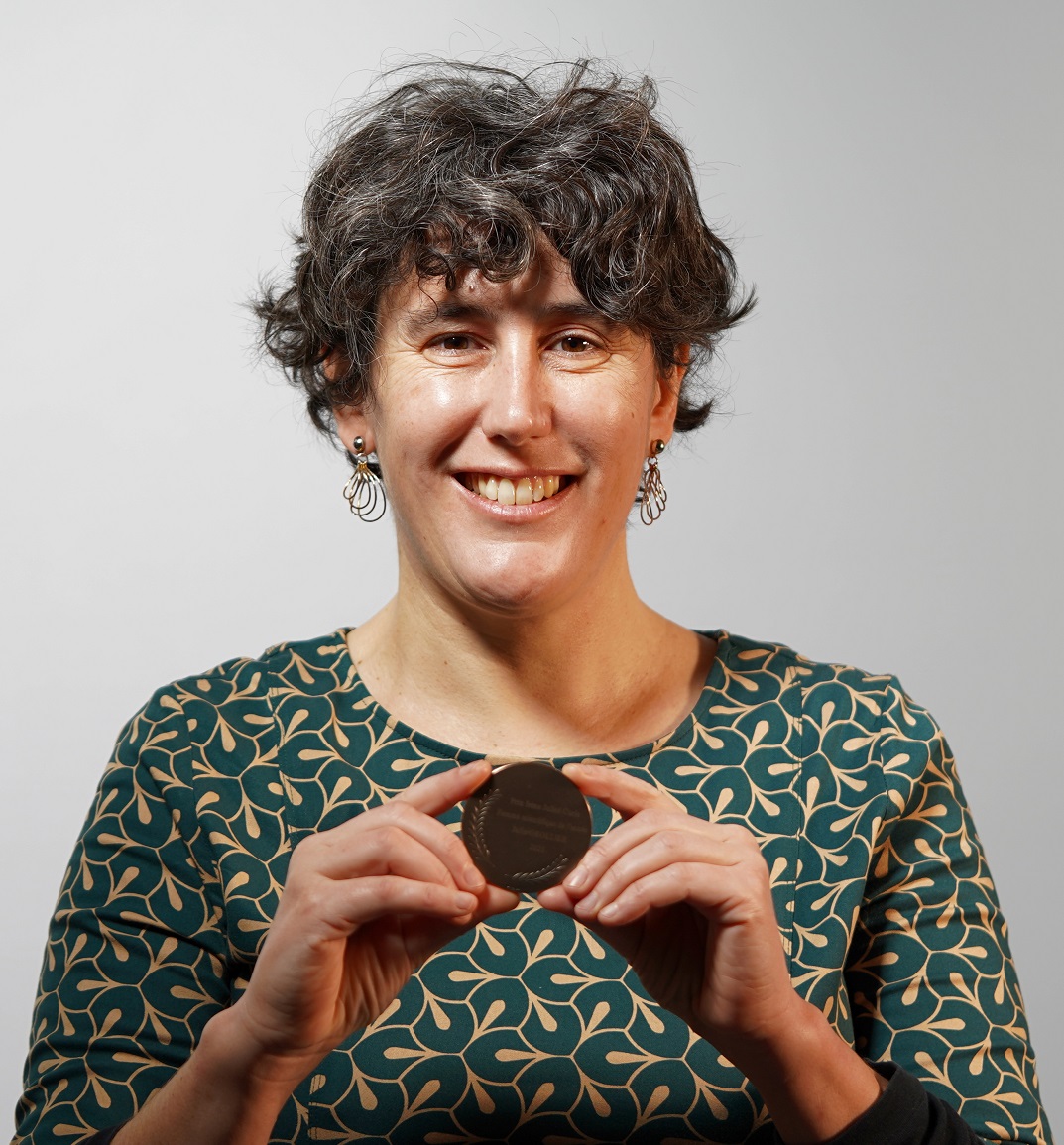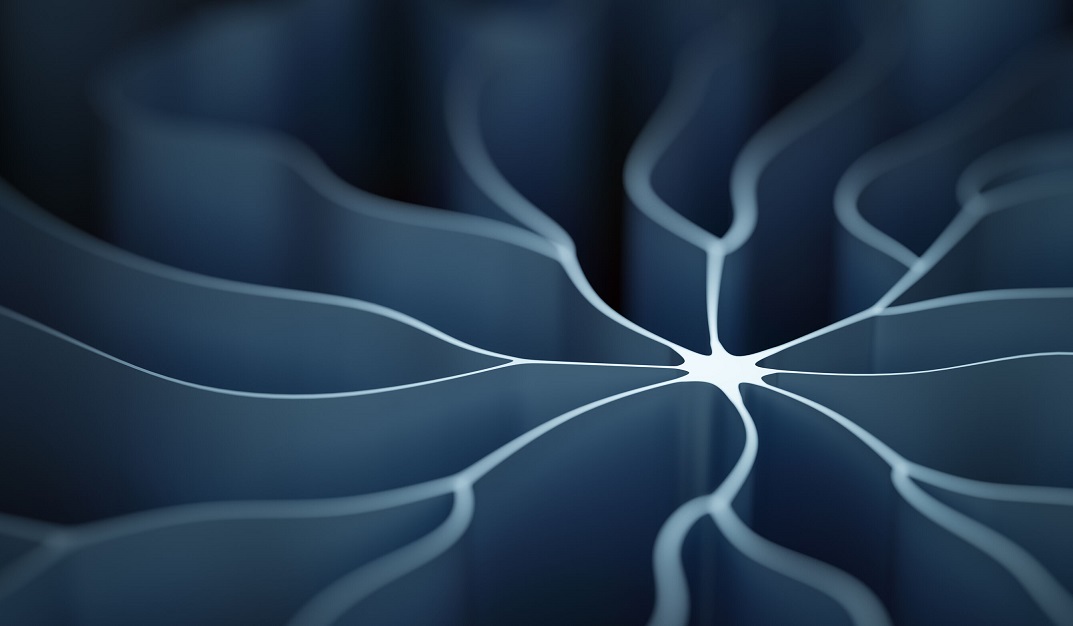Julie Grollier, the nano-neuron architect
Director of research at the CNRS/Thales joint physics unit, Julie Grollier has been awarded the prestigious Irène Joliot-Curie Prize for women in science.
Julie Grollier, you have just been selected to receive the Irène Joliot-Curie Prize, which is awarded each year to recognise outstanding research and engagement by women scientists. How do you feel about this latest endorsement of your career and talents?

Of course I'm very honoured to receive this prize. First and foremost, it sets a seal of approval on the quality of the research conducted by our team at the joint CNRS/Thales physics lab. But it also celebrates the contributions of women to science, and I am proud to be part of this growing recognition, which I consider extremely important.
You are a pioneer of neuromorphic computing and one of the world's leading experts in the field. Can you tell us about the type of work you do?
I work in artificial intelligence. Most AI people today are concentrating on algorithms, or the lines of code that help to solve a particular problem or achieve a particular outcome. AI algorithms may be inspired by the workings of the human brain and its neural networks, but they are based on virtual neural networks running on conventional computer chips.
A neuromorphic chip, on the other hand, is a physical reproduction of a neural network. What we are attempting to do is to create zones of physical neurons connected by synapses. In my work, we are taking inspiration from the organisation and structure of the brain — and in particular from the way neural networks are organised as successive layers of neurons in the cortex — to develop processors that can run these algorithms very efficiently and with much less energy.
Digital technologies consume large amounts of energy. Could your work lead to real breakthrough in energy-efficiency?
That's what we hope. One day, we think it will be possible to run these artificial intelligence tasks with 1,000 times less electricity than they need today.
As things stand today, most artificial intelligence isn't installed on our mobile devices but in the cloud. And the cloud is made up of supercomputers installed in giant datacentres that use huge amounts of energy. Our objective is to develop very low-energy chips that could be installed directly in phones and cars, for example.
Your lab is part of the CNRS/Thales joint physics unit, which is seen as the gold standard of public-private research collaboration. How does the unit help you in your work?
It helps us in various ways. The unit was initially set up as a partnership between Thales and the French national research centre (CNRS) so the two organisations could share access to high-value research equipment and work together to develop disruptive technologies. It's an amazing laboratory that provides a perfect scientific setting for advanced research projects.
The Thales research centre is also multi-disciplinary, which is an added bonus. It has been extremely rewarding for me, with my background in physics and nanoscience, to interact with specialists in other fields. Learning more about the potential applications of my work is truly fascinating and it gives our research a more tangible dimension.
Talking of tangible dimensions, how long do you think it will take to transform your ideas and concepts into actual products?
That's very difficult to say. We're a fundamental research lab, and it took us several years to conduct our first cognitive experiment with a single neuron. We have come a long way in the four years since then, and now we have managed to connect several neurons together. Today we are working on synapses, which will be another major step forward. But how long will it take to develop a real-world application? Five to ten years, maybe. That's not very long in the world of science!

Not far from your laboratory, there's another research unit called the III-V Lab1, which was set up by Thales, the CEA and Nokia. Is there any interaction between the two?
Not for the time being, because we are working on nano-scale magnetic components, which are quite different from the components being developed at the III-V Lab. But sooner or later, when we need to develop the chips, their expertise will be extremely valuable to us.
On a more personal level, you mentioned earlier how proud you are to be part of a growing recognition of women in science. We know that female talent is woefully scarce in scientific circles. What message would you have for young women who are tempted by a scientific career but are hesitant about taking the plunge?
My message would be "Go for it!" A scientific career is incredibly exciting and rewarding. It's a far cry from the stereotype of a female researcher stuck in a room with a whole array of complex machinery. That may be one part of the job, but there are so many other aspects that are really very stimulating.
Personally, I manage a team of researchers working on collaborative French and European projects with multiple other players who need to communicate with each other about the results of their research. It is a collective, multi-disciplinary effort and it's very international.
Things are getting better for women scientists. When I completed my doctoral thesis at the joint research unit in 2003, female students were a real rarity. Today there are many more women in research. And companies like Thales are making a real effort to attract dynamic, professional young women as research engineers. The more women there are in these roles, the more attractive it will be for other women to join them.
Being a researcher, male or female, requires a high level of personal engagement. Do you ever have doubts? Do you ever say to yourself "I'm a woman, I'll never make it"?
Fortunately for me, I never do! I have to say that my father, a doctor, really motivated me to pursue a scientific career and had unshakeable confidence in my ability to succeed. I think it made me impervious to that kind of attitude.
Apart from your father, did any other figures inspire you to become a scientist?
I had icons, of course, like Marie Curie and Irène Joliot-Curie. But I never thought "I want to be like Marie Curie!" That's obviously impossible and a utopia. I have been more inspired by the people I have actually worked with. For example, I was fortunate enough to have Albert Fert, winner of the Nobel Prize in Physics, as my thesis supervisor. His enthusiasm was infectious and he has always been a huge source of inspiration for me. His ability to pass on knowledge in such a kind and caring way has been a real eye-opener. He pulls people up, never puts them down, and manages to get everyone to work together. I think that's basically why there's such an excellent atmosphere in our laboratory!
Winner of the Irène Joliot-Curie Prize, CNRS Silver Medallist, fellow of the American Physical Society… How do you stop all these accolades going to your head?
Researchers have a lot of freedom in the choices they make. That also means they assume a lot of responsibilities and take risks, especially when they have a whole research team behind them. Research is the school of patience, and failure is part of our everyday reality, so we tend to appreciate our successes with a great deal of humility.
1 This laboratory, probably the most advanced research facility of its kind in Europe, is working on new generations of semiconductors that replace silicon with elements from groups III and V of Mendeleev's periodic table. These include gallium, indium and arsenic, which have unique properties, especially when combined.
• 1975: born in Poitiers
• 1995-1998: studied engineering at École Supérieure d’Electricité
• 1998-2000: completed applied physics degree (agrégation) at Ecole Normale Supérieure de Cachan
• 2000: received master's degree in material science from Université Pierre et Marie Curie.
• 2003: completed doctoral thesis on "Magnetisation reversal by injection and transfer of spin" under the supervision of Albert Fert, winner of the Nobel Prize in Physics (Spintronics is the study of the intrinsic spin of the electron and its ability to electrically control the direction of the magnetic field of nano-devices.)
• 2003-2005: two post-doctoral studies on nano-magnet dynamics at Groningen University in the Netherlands and Institut d'Électronique Fondamentale d’Orsay
• 2005: hired as CNRS research project leader at the CNRS/Thales joint physics laboratory
• 2015: appointed Director of Research of the CNRS/Thales joint physics laboratory
• 2017: published research findings in Nature showing that her team had succeeded in getting a computer to mimic a biological neuron by recognising ten digits spoken by ten different voices — a major scientific advance!
• 2021: published her first book: Estelle et Noé à la Découverte des Intelligences Artificielles (publisher: Millepages).

